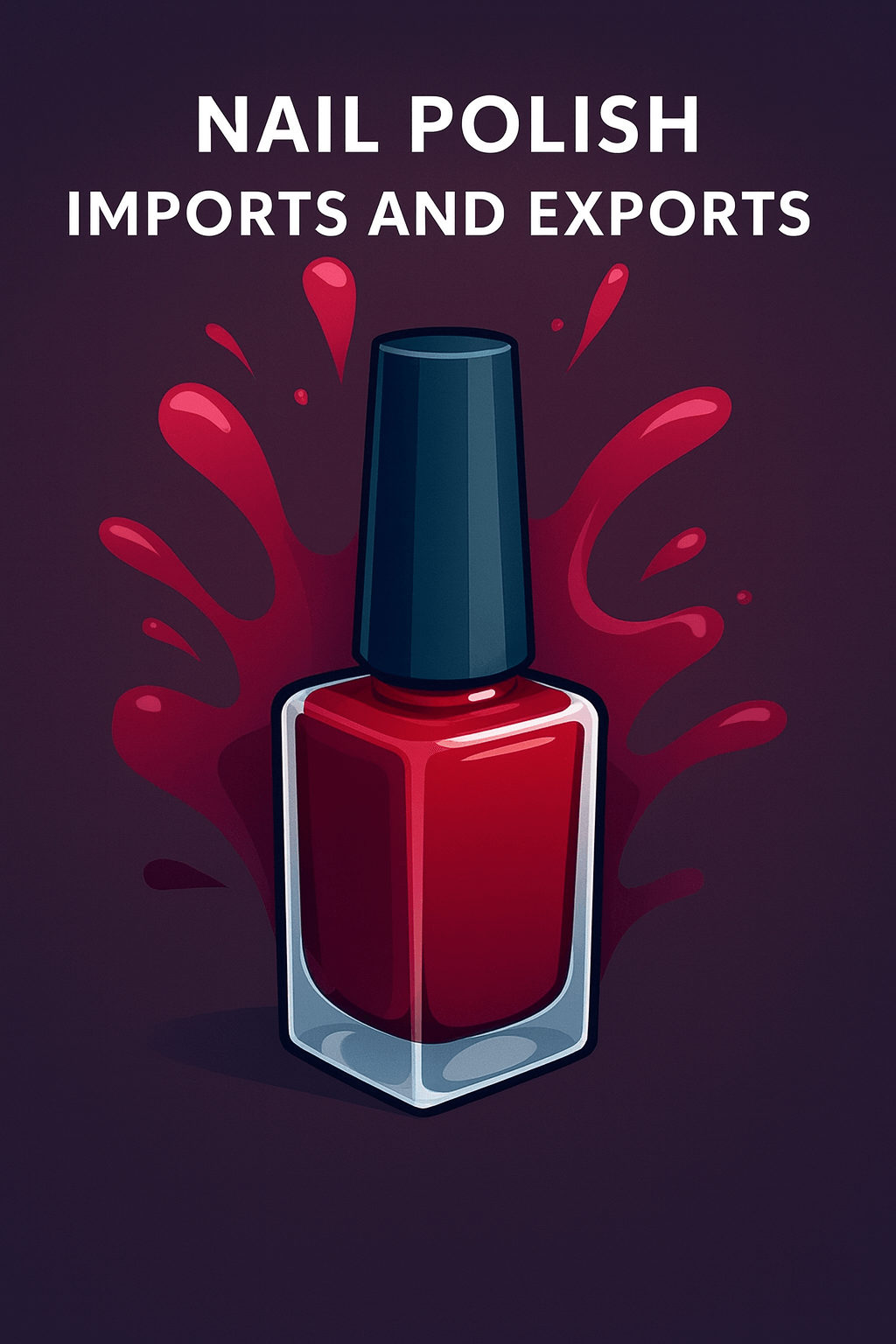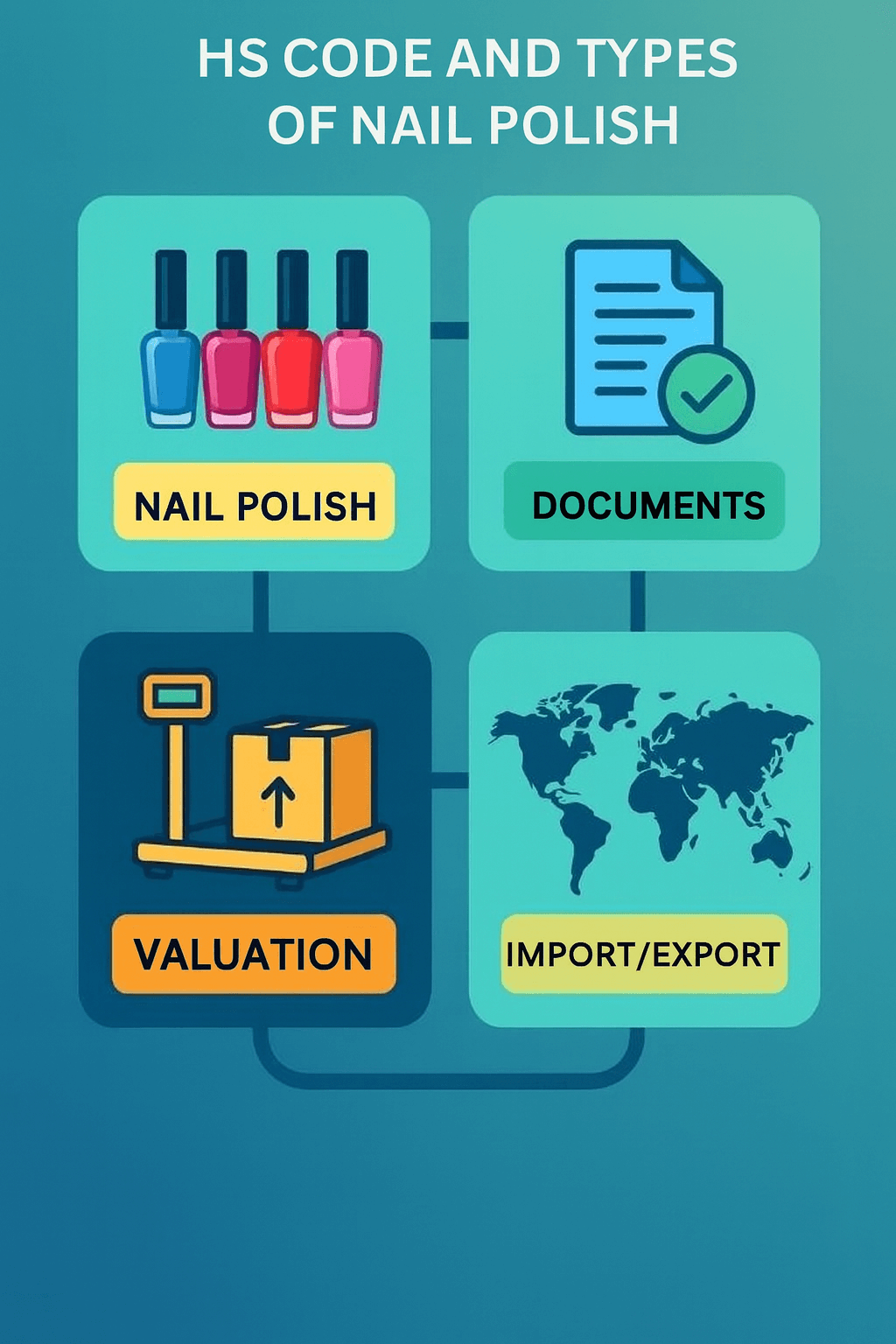Customs Clearance of Various Lacquers in Iran (HS Code + Documents & Permits)
Customs clearance of various lacquers, as a cosmetic and hygienic product, is a sensitive and complex process that requires full knowledge of customs regulations and health standards.
For estimating the time and cost of clearing various lacquers (cosmetic/decorative/industrial), contact the Saba Tarkhis experts.
Instant Free Consultation
1) HS Codes for Various Lacquers
| Type of Lacquer | Short Description | HS Code |
|---|---|---|
| Nail Polish | Gel/matte/glossy/glitter; high health sensitivity | 33043000 |
| Hair Lacquer (Hair Spray/Color) | Temporary hair color; requires health permits | 33053000 |
| Decorative Lacquers | Surface decoration for wood/glass/metal; special chemical compositions | 32082090 |
| Automotive Lacquers | Coating and painting automotive parts; specialized approvals | 32081000 |
| Artistic & Handicraft Lacquers | Decoration and painting on surfaces; specialty decorative colors | 32091000 |
Exact classification depends on formulation, application, safety, and packaging.
2) Types of Lacquer
-
1. Nail Polish
HS Code: 33043000
Description: Nail polish is one of the most widely used cosmetic products and, due to direct contact with skin and nails, carries high health sensitivities. It includes gel, matte, glossy, and glitter types, each potentially subject to specific clearance conditions. -
2. Hair Lacquer (Hair Spray/Color)
HS Code: 33053000
Description: A product for temporary hair coloring used in celebrations and events. Due to direct contact with skin and hair, such products require specific health permits. -
3. Decorative Lacquers
HS Code: 32082090
Description: Used for decorating various surfaces such as wood, glass, and metals; applied in interior decoration and handicrafts. Due to special chemical compositions, they may require more detailed quality verification. -
4. Automotive Lacquers
HS Code: 32081000
Description: Used for coating and painting automotive parts. Industrial products often have different chemical compositions and may require more specialized approvals from relevant authorities. -
5. Artistic & Handicraft Lacquers
HS Code: 32091000
Description: Typically used for decoration and painting on various surfaces in handicrafts. These products may include specialty colors and decorative materials that require specific quality controls.
Need precise HS classification, health permits, and document preparation? Our team manages your case end-to-end.
Request a Proforma Quote3) Key Points in Clearing Lacquers from Customs
Compliance with health standards: Importation of cosmetics and hygiene products, including lacquer, is subject to approvals from the Food and Drug Organization. All products must have health and safety certifications ensuring they are free from hazardous chemicals such as formaldehyde, toluene, or DBP.
Required documents for clearance: Core documents include the commercial invoice, packing list, certificate of origin, health approval, import permit, and order registration. Failure to provide accurate documents may result in delays or even seizure.
Customs valuation: A major challenge is accurate valuation. Customs value includes the price of goods, freight, insurance, and other related costs. Hence, accurate and transparent financial documentation is crucial.
Customs tariffs on lacquer: Tariffs for cosmetic/hygienic lacquers in Iran vary by type and country of origin. For example, the tariff on nail polish is commonly around 20% of the goods’ value, but it may differ for industrial and decorative lacquers.
Quality control: Before entering the domestic market, lacquer products must be tested and approved by the National Standard Organization and the Ministry of Health. Quality control is vital since these products come into direct contact with the human body.
4) Specific Conditions for Import and Export of Lacquers
Import
Export
Import and Export Volumes of Lacquer to Iran
Global Market Share of Lacquer and the Largest Exporters
5) Documents and Papers Required for Clearing Lacquer from Customs
-
1. Order Registration (Proforma Invoice)
Explanation: The first step in the import process is order registration in the national trade system. This document states the type of goods, quantity, country of origin, and price.
Importance: This is fundamental; without a valid registration, import and clearance are not possible. -
2. Commercial Invoice
Explanation: Issued by the seller, it includes precise details on the goods such as quantity, unit price, and technical specifications.
Importance: Serves as the basis for customs valuation and calculation of duties and taxes. -
3. Packing List
Explanation: Contains information about packaging, number of packages, and net/gross weights.
Importance: Essential during inspection and physical examination at customs. -
4. Certificate of Origin
Explanation: Issued by the chamber of commerce in the country of origin, indicating where the goods were exported from.
Importance: Determines customs tariffs and international trade conditions. -
5. Health & Safety Certificate
Explanation: For cosmetic lacquers, a health certificate confirming compliance with Iranian safety standards is mandatory.
Importance: Indicates the absence of harmful chemicals such as toluene or formaldehyde in the lacquer composition. -
6. Food and Drug Organization Permit
Explanation: Cosmetic products, including nail and hair lacquers, require permits from the Food and Drug Organization, ensuring health and quality approvals.
Importance: Without this permit, import and domestic sale are not allowed. -
7. Customs Valuation
Explanation: Indicates the final customs value based on invoice price, freight, and insurance.
Importance: Accurate valuation is vital for calculating duties and avoiding clearance disputes. -
8. Insurance Certificate
Explanation: Shows the goods were insured during transit, protecting against risks such as damage or loss.
Importance: Necessary to compensate possible damages and ensure safe transportation. -
9. Bill of Lading
Explanation: Issued by the carrier, indicating how the goods were shipped from origin to destination.
Importance: One of the most important shipping documents, confirming ownership and cargo details. -
10. Customs Declaration
Explanation: Contains precise information on the type, quantity, value, and other specifications submitted to customs.
Importance: Customs reviews and clears the goods based on this; accuracy is critical. -
11. Certificate of Compliance (Standards)
Explanation: For some industrial or decorative lacquers, a standards certificate is required to prove compliance with safety and quality regulations.
Importance: Ensures product quality and conformity with import regulations.
Need precise HS classification, permits, and document preparation? Our team manages the entire process end-to-end.
Submit a Proforma Request
Frequently Asked Questions
What are the HS Codes for different lacquers?
Based on your text: nail polish 33043000, hair lacquer 33053000, decorative lacquers 32082090, automotive lacquers 32081000, and artistic/handicraft lacquers 32091000.
What permits are required to import lacquer?
According to your text: Food and Drug Organization permit, health/sanitary certificate, order registration, and base documents like the invoice, packing list, certificate of origin, and for industrial cases, a standards certificate.
How is customs valuation of lacquer performed?
Customs value comprises the goods price, freight, insurance, and other costs; accurate financial documentation is essential to avoid disputes.
Specialized Customs Services by Saba Brokerage
Saba Brokerage, as a pioneer in customs clearance in Iran, provides comprehensive and specialized services to help importers clear their goods quickly and with minimal issues. With extensive experience in clearing various lacquers and cosmetic/hygienic products, the firm delivers professional and precise services.
Professional pre-import consulting: Market analysis and thorough review of regulations and customs tariffs are crucial steps in the import process. By offering specialized consulting, this team guides importers on the best import methods and document preparation.
Obtaining health permits and standards: Cosmetic and hygienic products, especially lacquers, require approvals from the Food and Drug Organization and standards certifications due to direct skin contact. Working closely with relevant authorities, the company obtains the necessary permits in the shortest possible time.
Fast and precise clearance follow-up: The clearance process requires continuous and meticulous follow-up. The experienced team manages all stages from order registration to final delivery, helping importers accelerate the process.
Valuation and appraisal services: Accurate valuation is a sensitive stage in clearance. The specialized valuation team conducts assessments carefully and in accordance with customs regulations to prevent any tax or customs issues.
Post-clearance services: After customs clearance, importers may need transport, packaging, or distribution services. These services are also provided so the goods reach customers without hassle.
Using these services assures importers that all clearance steps are performed correctly and in compliance with regulations, and that their goods will enter the country promptly and without problems.
For more information, please contact our experts.
.png)
